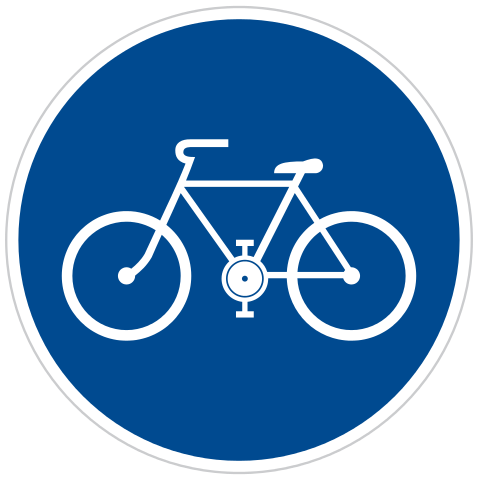I was always wondering this. Imagine a steep descent. What is better for brake wear - braking constantly or more powerful just at the end? Anybody knows? Goes for both rim and disc brakes
Braking at the bottom will cause less wear.
Because air resistance also has a braking effect, and it increases with your speed, squared.
So the faster you go, the more energy will be bled off from wind resistance.Also, braking strongly in short bursts is better than letting your brakes rub continuously. That will cause them to overheat and glaze the brake pads, destroying them.
Wind resistance makes total sense. I’m not entirely sure on short bursts, though. I mean you have to change the fixed amount of kinetic energy to heat in fixed time. Theoretically both would result is similar temperature given short time span.
Short bursts heat up your pads quickly, but allow them to cool back down in between.
Continuous braking keeps the heat on.Hm, yes, but total amount of heat is constant. Perhaps it cools quicker with bursts and its higher temperatures because of difference in temperature against ambient.
Not all the heat goes into your brake pads. Your rims or discs take much of the heat but also cool down very fast.
The amount of wear will be the same.
You don’t want to drag your brakes though because they will heat up and fade if you’re on a long descent and brake fade is very dangerous on steep descents.
Proper braking technique is brake right before any turns and then let off in the middle of a turn. You can brake a little after the turn also. You basically want your bike to roll as fast as it can and just control it before and after turns.
You’re gonna want to train yourself to go faster though because the technique i describe will have you descending very quickly and most people fear brake in descents because fast descents can be very scary for the untrained.
Yea, sure, I was asking for a friend (literally) who would break continuously and slowly descend. Me? Pedal right until the turn :)
Physics says both use the same amount, just one is spread out more and the other is all at once. I don’t have the formula, but basically it takes the same overall effort to stop an object regardless of if it’s slowly or very fast.
If you however travel at greater speeds, you loose more energy to air resistance since it squares with velocity. If you only brake at the end you will have lost a greater amount of energy to air resistance and less energy will go into the brakes.
I get the thinking (because it’s my first thought too), but the basic force formula (F=M*V^2), means velocity is the greatest influence on Force.
So braking from the higher speed will result in a greater force, meaning more energy dissipation.
I think. Maybe there’s something I’m missing here, like including the time to convert that energy to heat via the brakes. Perhaps in the end it’s all the same (braking early and keeping speed down), since we’re always converting the energy imparted by gravity to heat.
I’m throwing out a guess, but the force required to stop an object is related to the square of velocity. You’d need to integrate force over the stopping distance to know for sure, but with that squared term going downhill it’s almost certainly better to apply even force over a longer time. You’re going to speed up otherwise, requiring more total force.
For a flat surface, the force is proportional to stopping distance, so the total force is the same regardless of distance, but you need to apply that total force in a smaller time, which for extremely short stoppimg distances surely results in different wear. In that case, it’s probably much more complicated and there’s some optimal braking distance or optimal braking curve, rather than some simple way to figure it out. I’d say simple advice is that if it’s not comfortable for you, that’s a good indicator that its causing more wear.
The best thing to do is to anticipate when you’ll need to stop, and stop accelarating. Then you’ll need far less force to brake. Every day I see people speed up to a light that just turned red, so there’s no chance it will be green when they get there. Then they brake and wait 3 minutes. Just let off the gas as soon as you can tell you’ll be waiting at the light. Of course be aware of people turning or whatever, but mostly there’s no reason to quickly arrive at a light you’re sure you’ll be sitting at.
Depending on the heat build up and dissipation and the length of the slope, constant gentle braking could result in loss of friction if the brakes overheat that would have a negative impact on being able to control the speed at the end of the hill and could result in warping discs brakes.
It would probably need to be a very long and steep slope to do that, but heat build up is the only thing that really impacts brake wear since the same amount of friction is needed to slow or stop.
Yes, yes, But are you sure about that? If we ignore other factors (i.e. wind resistance) you have to convert fixed amount of kinetic energy to fixed amount of heat. Both should generate the same amount of heat, the difference would be that breaking in short bursts might create higher temperatures momentarily.
Breaking momentarily with gaps in between to allow time for heat to dissipate might help avoid brakes overheating on long and steep enough slopes. It would probably need to be quite long for it to be an issue.



